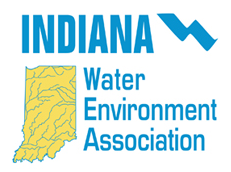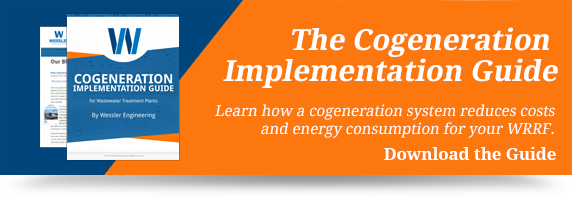The 2016 IWEA Annual Conference had many great exhibits, speakers, and presentations, all providing new technology and services to the world of wastewater. How to save and reuse resources, and treat wastewater efficiently were reoccurring themes. We have recapped three hot topic presentations from last week's annual conference.
Stop Wasting Your Gas! Produce Your Own Energy Through Cogeneration.
by Charity Dudley - Wessler Engineering
Have you ever seen an open flame at a wastewater treatment facility? That flame is most likely burning off methane produced during anaerobic digestion. Anaerobic digesters produce gas that is approximately 60% methane, a natural gas. Instead of wasting this natural gas by burning it off into the atmosphere, the gas can be cleaned to eliminate moisture and contaminants. The clean gas is fed through a cogeneration unit, which produces heat and electricity. The captured heat from the generator is used to heat the digesters or HVAC system and the electricity produced can be used within the treatment facility or sold to the local electric utility.
The Future of Wastewater Treatment
Advances in Wastewater Treatment Technology
by Terry Boyer - Donohue and Associates
With regulations pushing for lower effluent limits, and an increase in sludge production, new technologies need to be developed to effectively treat influent wastewater. There are some processes that have been around for a while but have not commonly been used in the United States, and some processes that are only just emerging onto the wastewater scene. Membrane-aerated biofilm reactors, electrogenic bioreactors, microbial fuel cells, biocatalyst, and granular activated sludge, are just a few treatment advancements that may become more common as regulations become stricter. Many of these technologies can remove BOD, nitrogen, and phosphorous in one unit, resulting in a simpler treatment train with reduced energy costs.
Reclaiming and Reusing our Resources
National WEF Update by Tom Kunetz - Water Environment Federation/ Metropolitan Water Reclamation District of Greater Chicago
In wastewater treatment there are a lot of wasted products in the treatment process. Tom Kunetz from the Metropolitan Water Reclamation District of Greater Chicago presented innovations in treatment that allow to reuse those products in everyday life. He noted that phosphorous, typically used as a fertilizer for plants, is not a renewable resource. Phosphorous is mined and once it is used and lost to the rivers and treatment facilities, it is gone forever. Phosphorous is also found in sludge as a byproduct of activated sludge processes. Instead of using chemical fertilizers, Kunetz suggests using wasted sludge from treatment facilities, and reusing it as a natural fertilizer or top soil. Algae produced during the treatment process could also be reused instead of brushing off and disposing or erased with chemicals. Algae biomass could be saved and converted into biofuel and reused as energy for the treatment plant, which would lead to reduced energy costs.
Tags


